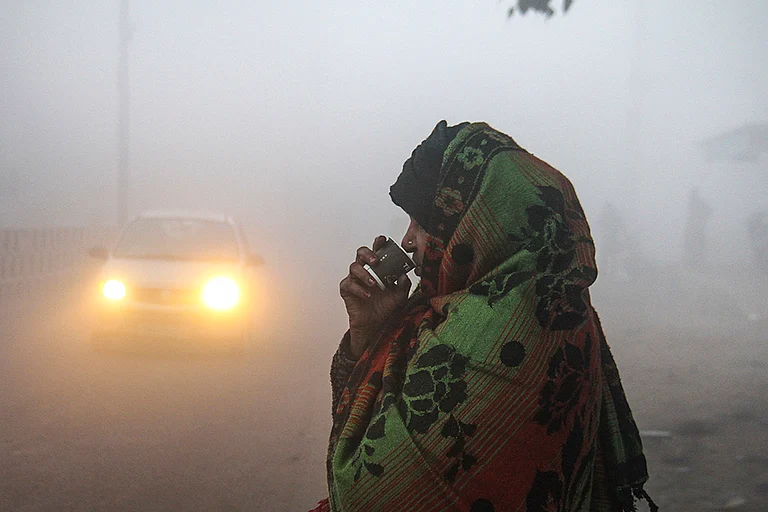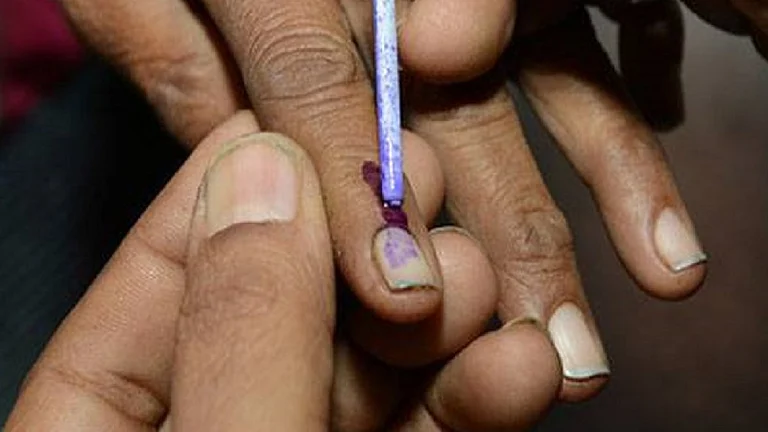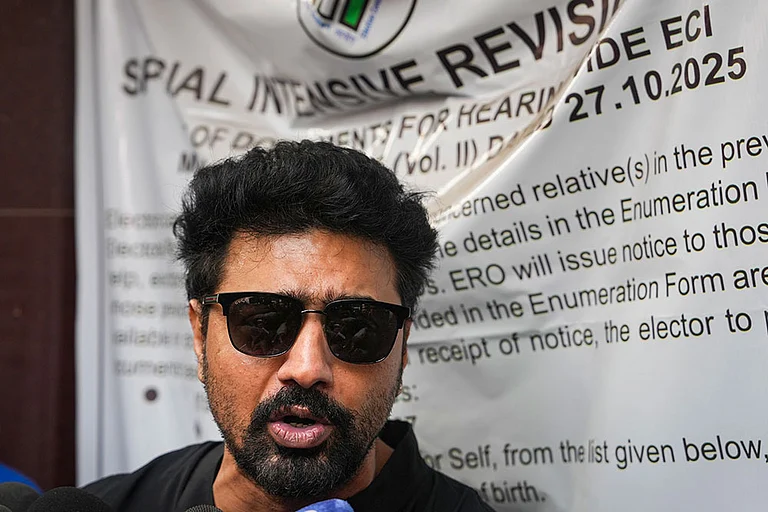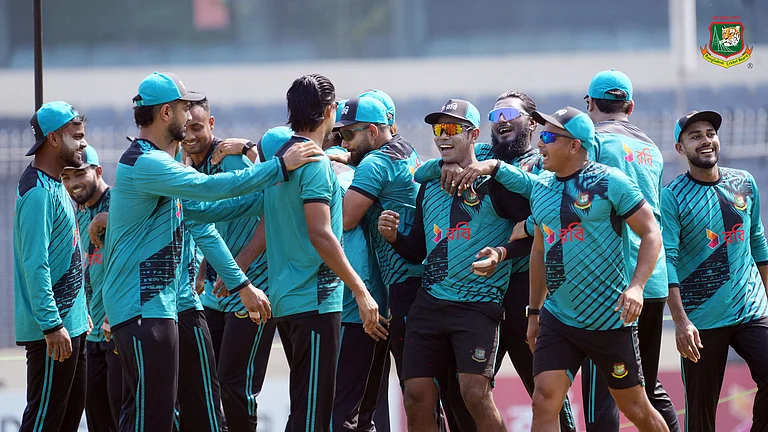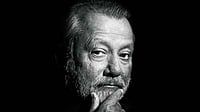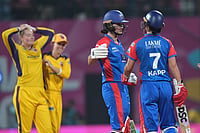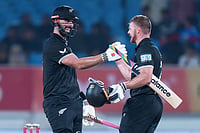Within days of Lata Mangeshkar’s demise, another legend of Indian film music breathed her last. Though not as well known in the rest of India, Sandhya Mukherjee was a musical institution in Bengal. From 1950s onwards, she was the numero uno female playback singer in Bengali films, the eternal “voice” of Suchitra Sen. Her duets with Hemanta Mukherjee (known as Hemant Kumar to Bollywood fans) are the stuff of legends.
At least one of them is still the quintessential love song for generations of Bongs: Ei poth jodi na shesh hoy. But much before all this came to pass, Sandhya Mukherjee had a brush with Hindi cinema.
6 April, 1946. A Saturday. While politically it was a turbulent time for the subcontinent, India’s music scene was throbbing with possibilities. The Geetashri examination for music was being held in Calcutta. The examiners constituted music royalty: the grand old man of Indian classical music Ustad Alauddin Khan, sarod exponent Ustad Dabir Khan, and the son of the bard, Rathindranath Tagore. It must have been a source of amusement to the legends that a teenaged girl emerged the winner.
14 year-old Sandhya Mukherjee came first, and the title Geetashri was forever prefixed to her name, and that’s how generations of Bengalis. The annual event was discontinued in the early 70s, and the only other name in the popular arena with that title was kirtan-singer Chhabi Bannerjee, who passed away in 2012.
Sandhya’s brother Rabindranath Mukherjee was witnessing her sister’s musical talent blooming. But she needed to learn. It was he who introduced her to her first teacher, Jamini Gangopadhyay, and then one fine day, he was the one who held her hand and brought her to her Guru, her mentor - who polished her art and taught her everything she knew. Rabi wanted Sandhya to meet the venerated tabla maestro Pandit Gyan Prakash Ghosh, a walking-talking encyclopaedia of Indian classical music. It was at Ghosh’s house she first encountered Ustad Bade Ghulam Ali Khan, a man she was to call “Baba” from then on.
The Ustad took her under his gigantic wings, and they completed the ancient ritual of Ganda-bandhan, a sacred practice by which a guru ordains their disciple. He tied a red thread around her wrist, gave her tiny morsels of chickpeas and jaggery to eat, and asked her to do the same. Under his tutelage, she learned the intricacies of music, and attained remarkable deft in performing khayals and thumris. Later she sang the Bengali version of her Baba’s famous thumri Ka karoon sajani, aaye na baalam as Ki kori shojoni, aashe na pritama.
Armed with this exquisite grounding of music, Sandhya stepped into the world of playback singing around 1947-48, almost simultaneously singing for Hindi and Bengali films. At the time, Calcutta’s New Theatres made a decent number of Hindi films, some of them shot as bilinguals. While she sung for Bimal Roy’s Anjangarh (1948) and Agradoot’s Samapika (1948), with Raichand Boral and Robin Chatterjee as music directors respectively, she also sang for the Hindi film Shabri (1947), which had Pandit Ganpat Rao attached as music director. She sung two songs, Woh prem rang mein rang gaye and Kitni door tora dwar ram mere.
The next year brought H.S. Rawail’s Jhoothi Kasmein (1948) featuring four songs by Sandhya Mukherjee: Saiyan jhoola jhulan ko aye, Dhokhe mein na aa pyare, Sawan ke din aaye, and Tuney tinke samajh kar. The music director was Ghulam Ahmed Chishti, who later crossed over to Pakistan after partition and laid the foundation of film music there. It may be assumed she was singing all of this in Calcutta, because as legend has it, Sachin Dev Burman summoned her to Bombay in 1948. She met S.D.’s wife Meera Dev Burman at her South End Park residence and sang to her. But it took her two years to decide. Did moving to Bombay make sense?
Finally, she set foot in Bombay one morning in 1950. She was put up at S.D. Burman’s favourite Evergreen Hotel in Khar. But the first movie she sang for in Bombay had Anil Biswas as music director. It was a duet with another rising singer named Lata Mangeshkar. The song was Bol papihe bol re, from the Dilip Kumar-Madhubala starrer Tarana (1951). Lata Mangeshkar and Sandhya Mukherjee became fast friends.
They were almost the same age, born within 2 years of each other, and they were both making a name for themselves in playback singing. Sandhya’s mother had come to visit her, and this was when Lata came calling and became an ardent fan of her mother’s Bengali cooking. Sandhya returned the favour by bingeing on Marathi food at Lata’s place.
The two of them would spend hours on the phone, often singing to each other. Sandhya was an admirer of Lata’s long tresses, which she would often help tend to. They were ardent fans of each other. Lata felt a strong affinity with Bengali culture, and believed Marathis and Bengalis had plenty in common, including their shared love of theatre, music, food and sports. This explains her camaraderie with Hemanta Mukherjee, Salil Chowdhury, S.D. Burman, R.D. Burman - and Sandhya Mukherjee. She could converse in the language, and had hired a tutor to learn to read and write it better.
Sandhya Mukherjee later recorded one song with S.D. Burman in Sazaa (1951), Aa gupchup gupchup pyar karein, a duet with Hemanta Mukherjee, picturised on Nimmi and Dev Anand. By 1952, it is believed, Sandhya left her Bollywood career behind and returned to Calcutta. But her songs featured in Hindi films through 1954 (Manohar) and 1956 (Jaagte Raho). Her song Beet jaayegi umariya was part of a 1973 release called Chimni ka Dhuan, which one would assume was a much-delayed release from the 50s. Upon her return, though, Sandhya Mukherjee concentrated only on singing for Bengali films.
Late 50s to mid-70s represented an extremely fertile period for Bengali cinema in terms of its mainstream output. Romantic comedies, dramas, thrillers, family dramas, satire, slapstick - everything seemed to be working with Bengali middle-class “bhadralok” audiences and the pair of Uttam Kumar and Suchitra Sen sat on the top of the heap. Both Manna Dey and Hemanta Mukherjee sang for Uttam Kumar, but Hemanta seemed to tie well with Uttam’s timbre.
But as far as Suchitra Sen was concerned, none seemed suited to her heavy, velvety voice quality as Sandhya Mukherjee. In the ensuing decades, Sandhya became a veritable icon as far as playback singing was concerned. There exists a very unique Bengali genre of non-film music called “modern songs”, which used to be almost as popular as film music - sometimes even more. Here too, Sandhya Mukherjee was the uncrowned queen.
The rumour mills often tried to drive a wedge between the two, but Sandhya Mukherjee and Lata Mangeshkar remained friends. As one passed into oblivion, the other followed suit. And now they must be filling the Great Beyond with exquisite melodies.








